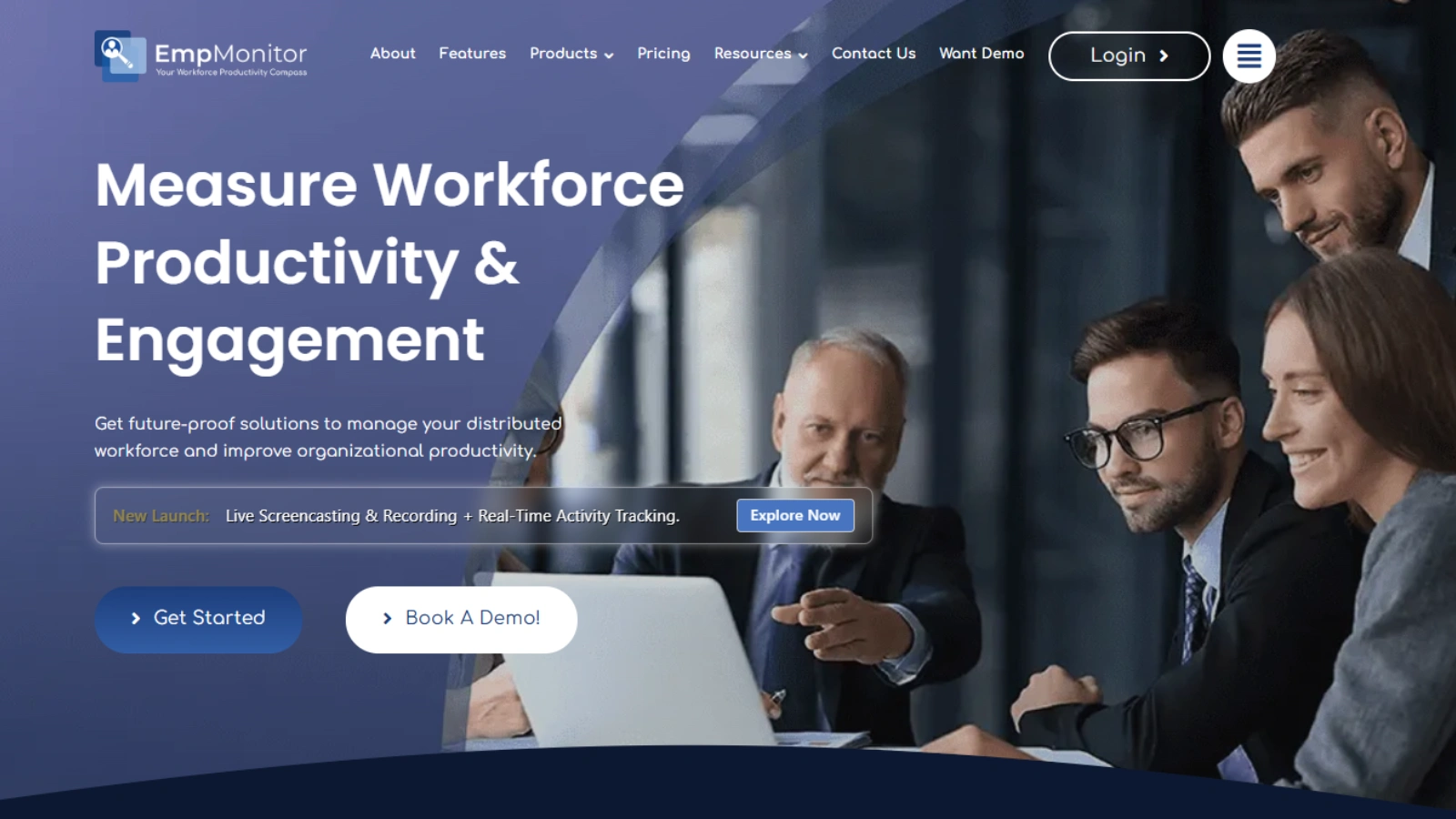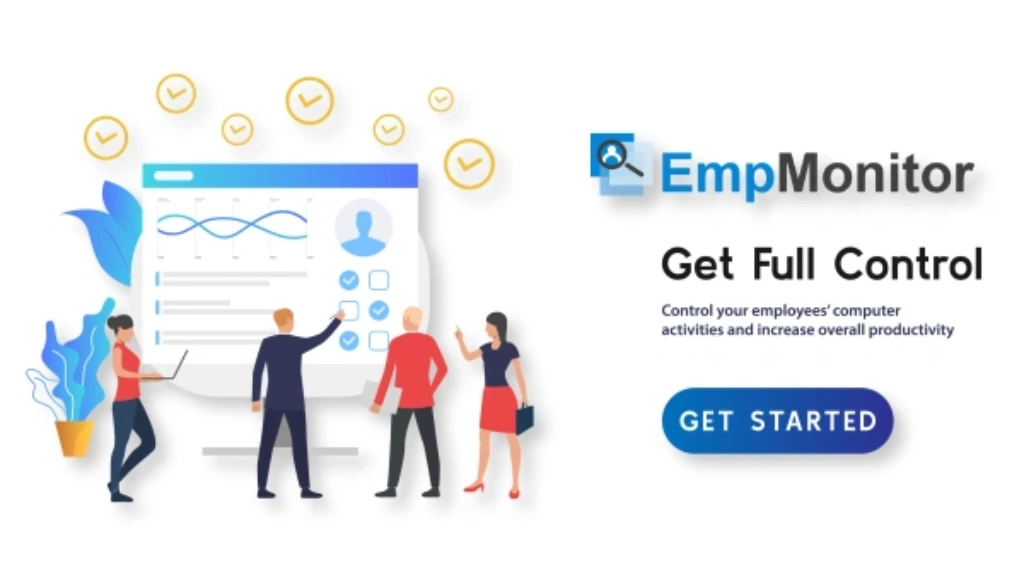Work isn’t what it used to be. Gone are the days when showing up at an office five days a week was the only way to get things done. In its place, a more flexible model is taking shape, one that blends remote and in-office work. It’s called hybrid work, and it’s quickly becoming the new normal. So, what is hybrid work, and why is everyone talking about it?
In this guide, we’ll unpack what hybrid work means, the upsides and challenges that come with it, and how both companies and individuals can make it work. Whether you’re leading a team or adjusting to new ways of working yourself, getting a handle on hybrid work is a must in today’s fast-changing world.
In a hurry? Listen to the blog instead!
What Is Hybrid Work?
So, what is hybrid work, and why is everyone talking about it?
At its foundation, hybrid work is a model that enables employees to work partly from home and partly from the office. But it’s not a rigid formula. One team might show up twice a week, another might come in only for client meetings or brainstorming sessions.
The key is flexibility, giving people the option to work where they’re most productive.
Take this for example: a marketing team might gather in the office every Monday to kick off the week, then work remotely the rest of the time. Meanwhile, an IT team could rotate in-office days based on project timelines or technical needs. There’s no single right way to do hybrid work; that’s what makes it so effective. It adapts to different roles, teams, and company cultures.
How Hybrid Work Became The New Normal?
Not too long ago, before 2020, working from home was seen as a rare privilege, mostly limited to freelancers or professionals in tech. For most companies, being physically present in the office was considered essential to getting things done.
Then everything changed.
The global pandemic forced businesses to operate remotely overnight. And what started as a temporary solution soon opened eyes to a new reality: remote work worked. Not only that, it exposed the cracks in traditional, rigid work setups.
As organizations looked for long-term solutions, hybrid work quickly stood out. It offered the best
Leaders began to notice that people thrived when given autonomy. Productivity didn’t just hold steady, it often improved. This shift in mindset laid the foundation for today’s hybrid work revolution and raised a key question across industries: What is hybrid work, and how can we make it sustainable?
What Are The Key Components Of Hybrid Work?
To truly understand what is hybrid work is, it’s important to break down the key ingredients that make it function smoothly and successfully:
Flexibility in Work Location:
Employees have the autonomy to choose whether they work from home, the office, or a mix of both, based on what suits their tasks and productivity.
Personalized Scheduling:
Teams or individuals decide which days make the most sense for in-office collaboration, allowing for smarter planning and better work-life balance.
Smart Use of Technology:
Digital tools like video conferencing, project management software, and cloud-based storage keep teams connected and productive, no matter where they are.
Inclusive Collaboration:
Every team member, whether remote or on-site, should feel seen, heard, and valued. Equal access to meetings, resources, and decisions is crucial.
Results Over Office Hours:
The emphasis moves away from hours logged to the outcomes achieved. It’s about accountability, not presence; outcomes matter more than physical attendance.
Each of these components plays a crucial role in helping hybrid work thrive across different industries and team structures.
What Are The Most Popular Hybrid Workplace Models Today?
To fully understand what is hybrid work, it’s essential to explore the different models companies adopt to implement it. There’s no one-size-fits-all strategy; organizations tailor their hybrid workplace models based on goals, workflows, and team preferences. Here are five of the most widely used approaches and how they function:
Remote-First:
In this model, working remotely is the default expectation. Employees primarily work from home, but office spaces remain available for those who need or prefer them. It’s ideal for companies that prioritize flexibility and asynchronous collaboration.
Office-First with Remote Flexibility:
Here, the office is the primary workspace, but employees are allowed to work remotely on specific days. This model is common in companies transitioning gradually into hybrid setups and wanting to maintain an in-person culture.
Split-Week Model:
Employees divide their workweek between the office and remote work. For example, teams might come into the office on Tuesdays and Thursdays and work from home on the other days. It offers structure while still embracing flexibility.
Team-Based Scheduling:
Managers or department heads decide which days team members come into the office. Schedules are typically based on project timelines, collaboration needs, or client-facing responsibilities. This model promotes coordinated teamwork while reducing overcrowding.
Employee-Choice Model:
Employees are free to choose where and when they work, based on their individual preferences, roles, and workload. This highly flexible model works best when paired with a strong performance-based culture and clear communication norms.
Each model offers a unique balance between flexibility and structure. To fully understand what is hybrid work, it’s important to recognize that no single model fits all. The right choice depends on your company’s size, industry, management style, and how your teams operate best.
What Does Hybrid Remote Mean?
You might’ve come across the term hybrid remote and wondered how it differs from general hybrid work. While both involve a mix of remote and in-office work, hybrid remote leans more heavily toward remote work as the standard.
In a hybrid remote setup, employees primarily work from home or other remote locations, but they’re expected to come into the office occasionally, for team meetings, project kick-offs, client presentations, or company events. The office becomes a place for purposeful in-person collaboration, not a daily requirement.
This model offers the best of both worlds:
- Flexibility for deep, focused work at home
- Opportunities for in-person interaction when it truly adds value
For example, a company might designate one or two days a month for all-hands meetings or brainstorming sessions in the office, while the rest of the time, employees work remotely by default.
The key distinction is that hybrid remote isn’t about splitting the week evenly; it’s about prioritizing remote work, with office time being occasional and intentional.
What Are The Benefits Of Hybrid Work?
Understanding what is hybrid work is only half the equation. Let’s explore why it’s gaining so much popularity.
Improved Work-Life Balance:
With more control over their schedules, employees can better manage personal and professional responsibilities. This flexibility reduces stress and supports overall well-being.
Increased Productivity:
Eliminating daily commutes and office distractions helps employees stay focused. Many report getting more done in less time when working remotely.
Reduced Costs:
Companies save on office expenses like rent and utilities. At the same time, employees cut costs on transportation, meals, and work attire.
Access to Wider Talent Pools:
Hybrid work removes geographical hiring limits. Organizations can tap into diverse talent from different cities or even countries.
Higher Employee Satisfaction and Retention:
Flexibility makes employees feel trusted and valued. This leads to greater job satisfaction and lower turnover rates.
It’s clear that hybrid work isn’t just a convenience; it’s a strategic advantage.
What Are The Biggest Challenges Of Hybrid Work?
Understanding what is hybrid work is only the beginning; implementing it effectively comes with its own set of challenges. While hybrid work offers many advantages, it also brings unique hurdles that organizations must address to ensure long-term success:
Communication Gaps:
Remote employees can miss out on informal office discussions and spontaneous decisions. This may lead to misunderstandings or feelings of exclusion.
Unequal Visibility:
In-office workers may receive more recognition simply because they’re seen more often. This can unintentionally create bias in promotions or evaluations.
Technology Dependence:
Hybrid work relies heavily on digital tools and reliable internet. Any tech failure can disrupt collaboration, meetings, or workflow.
Cybersecurity Risks:
Remote access increases exposure to data breaches and cyber threats. Strong security protocols are essential to protect company information.
Culture Dilution:
Building and maintaining a cohesive team culture is harder when people aren’t physically together. Employees may feel disconnected from the company’s mission or values.
Proactively addressing these challenges is key to creating a hybrid model that’s sustainable and successful long term.
Also Read:
The Hybrid Team Revolution: A New Era Of Collaboration
Hybrid Remote Meaning: How It Works & Why Companies Love It?
What’s The Secret Tech Behind Successful Hybrid Workforces?
One cannot define what is hybrid work without recognizing the importance of the technology that powers it. Behind every successful hybrid team lies a powerful suite of digital tools that enables communication, ensures transparency, and enhances productivity.
To implement hybrid work effectively, businesses need more than just connectivity; they need smart solutions that offer real-time insights, workforce visibility, and airtight security. That’s where comprehensive platforms like EmpMonitor come in.
EmpMonitor is not just another employee monitoring tool; it’s a complete workforce empowerment solution built for the hybrid era. With its robust features, businesses can gain control over remote operations, foster accountability, and protect sensitive data, all while enhancing employee engagement.
How Does EmpMonitor Help You Master Hybrid Work Efficiency?
Managing a hybrid workforce comes with unique challenges, from monitoring productivity to securing sensitive information across remote teams. To truly understand what is hybrid work, it’s about blending on-site and remote models while ensuring both flexibility and accountability. EmpMonitor is an all-in-one platform designed specifically to support modern hybrid work structures by offering deep visibility, automated insights, and secure control over team operations.
Here’s how EmpMonitor enhances hybrid workforce efficiency:
Employee Monitoring for Performance Insights:
Keep your finger on the pulse of your distributed teams. EmpMonitor provides detailed team activity analysis, offering visibility into daily and hourly performance trends. Managers can track employee activity in real time and identify bottlenecks or top performers without micromanagement.
Smart Time-Tracking:
With automated, intuitive timesheets, you can view how time is being spent across projects, departments, or individuals. This is crucial in hybrid work settings, where accountability and transparency play a central role in building trust and driving productivity.
- Get real-time data on productive vs idle hours
- Analyze work styles and output patterns
- Automate accurate timesheet generation
User Activity Monitoring:
EmpMonitor allows you to maintain productivity without overstepping privacy. Through context-rich reporting, you gain insight into applications used, websites visited, and total engagement time, making it easier to support high-performing hybrid teams.
Insider Threat Prevention:
One major concern in hybrid workplaces is security. EmpMonitor helps mitigate risks by tracking usage across devices and platforms. It flags risky behaviors and attempted access to restricted areas, preventing data breaches before they occur.
Attendance & Leave Management:
Hybrid teams often deal with asynchronous work hours. EmpMonitor simplifies this with a smart attendance monitoring system that allows for paperless tracking, leave approval, and even payroll integration, all through a centralized dashboard.
Live Screencasting for Instant Support:
Need to assist remote employees? With EmpMonitor’s live screencasting feature, you can view or control employee desktops in real time. It’s perfect for troubleshooting, collaboration, and maintaining workflow continuity, without interrupting work.
Start your 15-day free trial of EmpMonitor and give your hybrid team the technological advantage it needs, smart operations, secure workflows, and unmatched productivity.
How Do You Build A Strong Hybrid Work Policy?
If you’re considering adopting hybrid work, crafting a robust hybrid work policy is critical. This policy sets expectations, guidelines, and rules for both managers and employees.
Your policy should include:
- Work Schedule Flexibility: Outline which days are remote vs. office-based.
- Communication Guidelines: Set rules for virtual meetings, updates, and availability.
- Performance Metrics: Focus on outcomes instead of hours.
- Technology Access: Ensure all employees have equal access to necessary tools.
- Health & Safety Measures: Define in-office protocols for cleanliness and safety.
A well-thought-out policy can help prevent confusion and keep your workforce aligned.
Also Read:
How To Create A Hybrid Work Policy In 2025? (Template & Examples)
Tips To Succeed In A Hybrid Work Environment
Once you’ve grasped what is hybrid work, the next challenge is making it work effectively for your team. Success in a hybrid setup depends on intention, communication, and flexibility. Here are some proven strategies to thrive:
Set Clear Goals:
Clarity is key. Ensure every team member knows their roles, responsibilities, and deadlines. When expectations are defined, accountability and productivity follow.
Communicate More Than You Think:
Lean into transparency. Regular updates and open channels help avoid misalignment, especially when your team is split between remote and office.
Establish Team Rituals:
Consistency creates connection. Set up routines like weekly virtual standups, daily check-ins, or designated office days to build rhythm and rapport.
Use Video Intentionally:
Not every conversation needs a video call. But for collaboration, brainstorming, or connection, FaceTime still makes a big difference. Use it wisely.
Foster Social Connection:
Hybrid work can feel isolating. Schedule virtual coffee breaks or informal chats to maintain camaraderie and keep morale high.
Embrace Flexibility:
Trust your team to get the job done. Avoid micromanaging and focus on results over rigid schedules. Autonomy drives engagement.
Ensure Equal Visibility:
Remote workers should have the same access to opportunities as those in-office. Be mindful when assigning projects, promotions, or leadership roles.
By implementing these thoughtful practices, teams can not only adapt to what is hybrid work, but also thrive in it with stronger collaboration, trust, and long-term success.
Conclusion
Hybrid work is more than a passing trend; it’s the new standard for modern workplaces that value flexibility, productivity, and employee well-being. By understanding what is hybrid work, recognizing the right workplace model, and implementing a well-structured hybrid work policy, companies can unlock the full potential of their teams.
However, the real key to long-term success lies in planning, transparent communication, and the strategic use of technology. Tools like EmpMonitor make it easier for businesses to manage hybrid teams with real-time visibility, data-driven insights, and security, without micromanagement.
FAQs
1. How do you measure employee engagement in a hybrid work model?
Ans. Employee engagement in hybrid work can be measured using pulse surveys, feedback forms, 1:1 check-ins, productivity trends, and usage of collaboration tools. It’s not just about output, it’s about involvement, motivation, and well-being. When organizations understand what is hybrid work and how it impacts team dynamics, they can better evaluate engagement by looking at both qualitative (feedback, morale) and quantitative (performance, collaboration) indicators.
2. What kind of roles are least suited for hybrid work?
Ans. Roles that require a physical presence, like lab technicians, factory workers, on-site maintenance staff, or in-person healthcare providers, typically do not align well with hybrid models due to the hands-on nature of their work.
3. How do you onboard new hires in a hybrid work environment?
Ans. Effective onboarding in hybrid setups involves a mix of virtual training, scheduled in-office days, assigning remote mentors or buddies, and structured check-in milestones. The goal is to immerse new hires in the company culture and workflows, regardless of location.


















